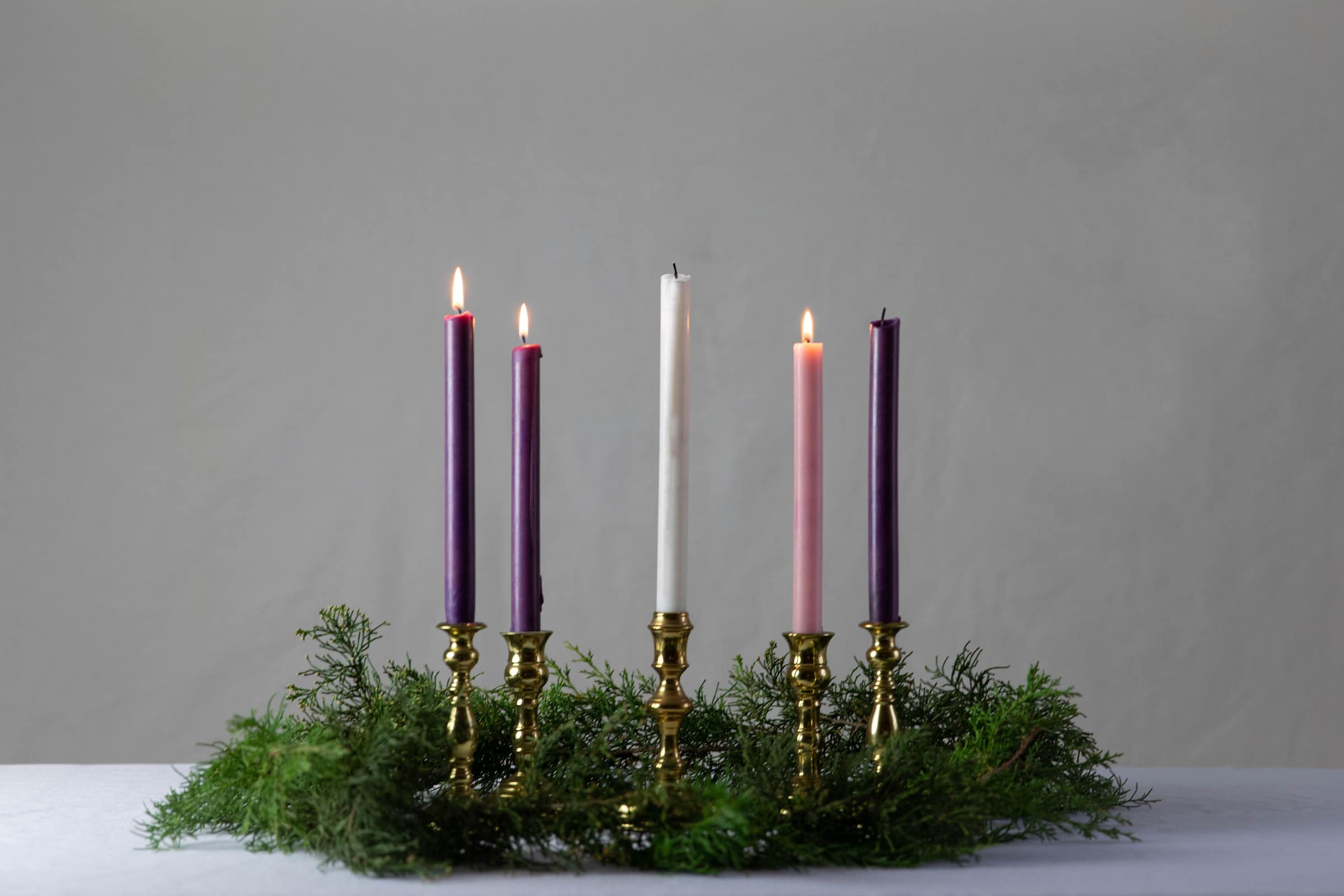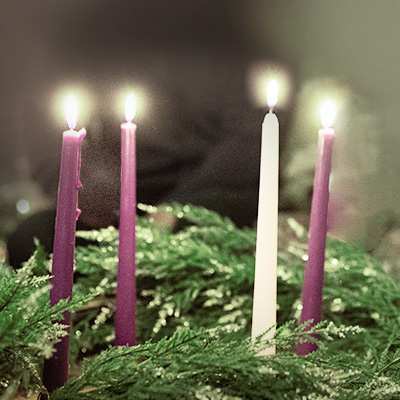Advent has historically tied the first Advent (the coming of Christ in the manger at Bethlehem) to the second Advent (the snatching away of the redeemed as seen in 1 Thess. 4:13-18 and the coming of Christ to the earth in Rev. 1:7, 19:11-16).
Advent means coming.
Our Lord Jesus coming to earth was a history-changing, life-changing event. Had He not come on that night long ago as a babe in the manger, we would not have had the man Jesus to die on the cross for our sins. The reality of Advent never changes.
Advent Should Never Be Mundane
The coming of our Savior and Lord is too crucial to ever become mundane. However, the way we approach the Advent season (Christmas season) and the way we present the realities of the first Advent can mean the difference between someone coming to know the Christ of Christmas or not.
Advent has historically tied the First Advent (the coming of Christ in the manger at Bethlehem) to the Second Advent (the snatching away of the redeemed as seen in 1 Thess. 4:13-18 and the coming of Christ to the earth in Rev. 1:7, 19:11-16).
Connecting the First and Second Advent
One could easily connect these two comings of Christ together and celebrate them both. The first Advent of Jesus Christ set up the hope of believers in the promised second Advent. So don't neglect this dynamic of the season. Be bold and proclaim the Second Coming as loudly as the First Coming.
"So what do I need to know," you may ask, "to begin the celebration of Advent at our church?" Here are some elements to assist you and your congregation in celebrating the coming of our Lord.
1. Create or Choose Your Church's Advent Wreath
Choosing an Advent wreath is helpful and beautifully symbolic of the season. A basic Advent wreath consists of a circle with four candle holders with one candle in the middle. It may be garnished with holly or pine boughs. There are two types of Advent wreaths. One is a tabletop model and the other is a freestanding model.
2. Learn About the Advent Candles
The lighting of the Advent candles can become an important portion of the worship experience. We have used different members of the congregation each year to light the candles. Thus, they become active participants in the worship event. Each candle is rich in symbolism.
Three of the candles in the circle are purple. Historically, this color has symbolized penance. But you can modify any of the symbols to meet the needs of our own church. Purple also suggests royalty.
One candle in the circle is pink or rose. This usually is symbolic of the Rose of Sharon; Jesus Christ being the One who took upon Himself the penalty for our sins.
The center candle is white. It is called the Christ candle.
3. Lighting of the Advent Candles
Advent begins four Sundays before Christmas Day. Candles are lit on each of the four Sundays during Advent.
On the first Sunday, light the first candle.
On the second Sunday, light the first candle and a second one.
On the third Sunday, light the first two candles and add the third candle.
On the fourth Sunday, light the first three candles, then light the rose candle.
You may choose to light only one candle each Sunday. On Christmas Eve, Christmas Day or the Sunday following Christmas, light all the candles, plus the white candle. It will depend on whether you have a Christmas Eve or Christmas Day Service.
4. Involve Everyone in Worship
Once the basic order of Advent is known, the pastor or worship planning team can determine how candle lighters are selected. One suggestion is to use a wide variety of people within your church: singles, new members, young married adults, medium adults, seniors, families or any other group of your choosing.
This way you will provide an opportunity for several people to be involved in the worship experience.
After a person or family lights the candle, have them read a Messianic passage relating to the pastor's sermon for that day, or it could actually be his selected text.
Another great way to involve everyone during Advent and the Christmas season is to hold a candlelight service. Candlelight services bring a peace and stillness to the busy Christmas season as a reminder of why we celebrate Christmas.
5. Use an Advent Litany
Along with the lighting of the candles, highlight the event by some special action such as an Advent litany.
These responsive readings may be tailor-made for the selected theme for each Sunday of Advent. By searching periodicals and books you can find a host of ready-made litanies and adapt them for use, or you may simply write personalized litanies each year.
6. Get Educated About Advent
Above all else be sure to educate yourself and your congregation concerning the meaning of Advent. Learn the basics, but also seek to understand how individuals and families can celebrate this spiritual tradition.
With this new knowledge, you can introduce your church to a new tradition or bring fresh insight to the celebration of the season.
7. Choose a Particular Advent Theme (For Pastors)
There are four Sundays before Christmas which are part of the Advent tradition.
Choosing a theme can assist you in planning the entire worship service. It will help you in your sermon preparation as you structure your sermons around those particular themes. In the past, I have taken the theme for those days that have been chosen in advance and written sermons with the theme title.
Dare to do anything that provides variety but is in keeping with the biblical text. Here are some examples. Perhaps these will be helpful in suggesting others. Each of these sets represent one Advent season. Most of the sets have only four individual Sunday themes.
Theme Examples (Each Title Represents a Sunday Service):
Theme 1: Coming to Execute Justice, Coming to Forgive Sins, Coming to Renew Love, Coming to Feed the Hungry
Theme 2: The Bethlehem Candle, The Shepherd Candle, The Magi Candle, The Salvation Candle
Theme 3: Watch, Prepare, Witness, Rejoice
Theme 4: The Prophecy Candle, The Bethlehem Candle, The Shepherd Candle, The Angel Candle
Theme 5: The Light of Hope, The Light of Comfort, The Light of Peace, The Light of Joy
Theme 6: Always Watch, Always Prepare, Always Proclaim, Always Rejoice, Always Glorify (Christmas Eve or Christmas Day).
8. Choose an Advent Bible Study for Small Groups
Lifeway has self-published many wonderful Advent Bible studies for small groups and families. If your small groups haven't engaged in an Advent Bible study before, this is the year to do it!

